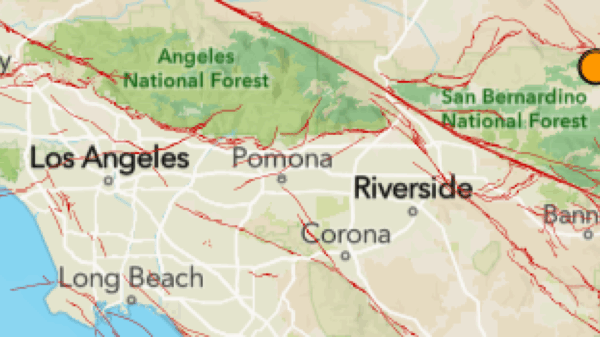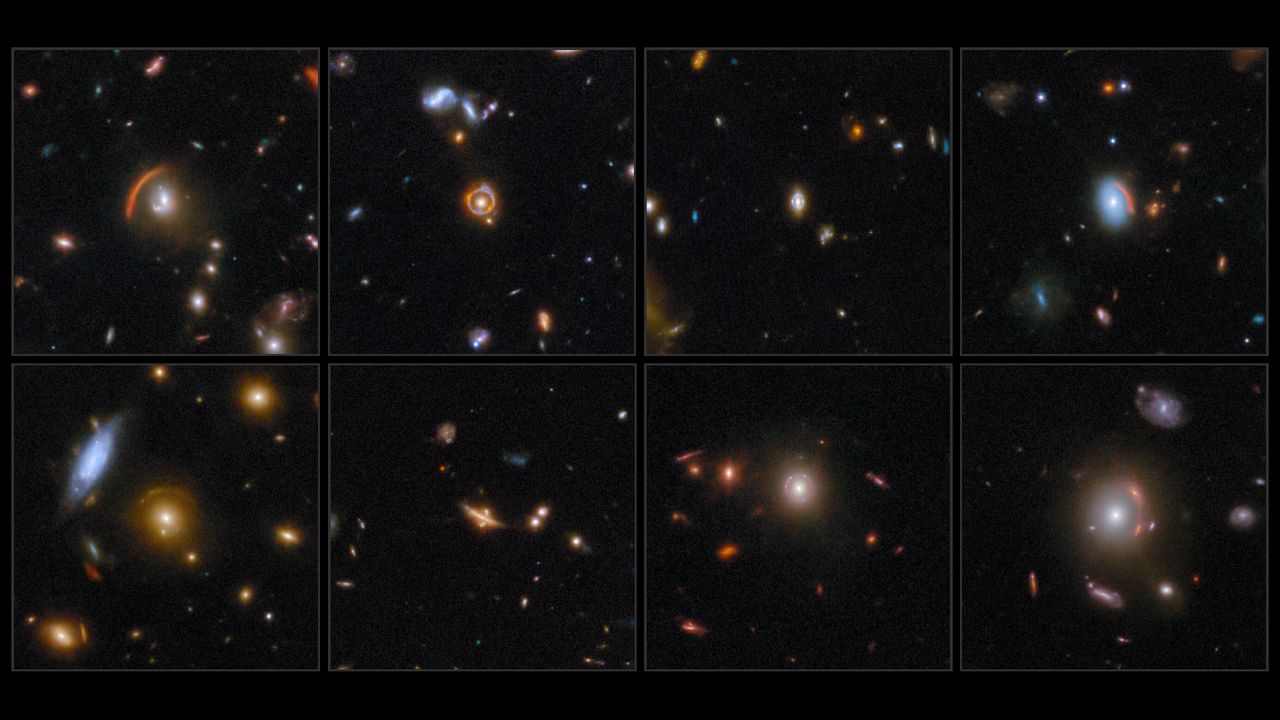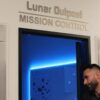The James Webb Space Telescope (JWST) has made a remarkable discovery, capturing images of eight distinct Einstein rings, a phenomenon predicted by Albert Einstein over a century ago. These images, shared on September 30, 2025, showcase a cosmic phenomenon known as gravitational lensing, allowing astronomers to observe distant galaxies in unprecedented detail.
Gravitational lensing occurs when a massive object, such as a galaxy, distorts the fabric of space around it. This distortion can bend the light from more distant galaxies, transforming their appearance into arcs or complete circles. The resulting structures, known as Einstein rings, serve as natural magnifying glasses, revealing galaxies that would otherwise remain hidden from view.
One of the most striking images is of the galaxy COSJ100024+015334, which appears as a perfect circle. This particular galaxy existed when the universe was only a billion years old, a tiny fraction of its current estimated age of more than 13 billion years. The JWST’s advanced infrared capabilities allow it to capture details that were previously obscured, enhancing our understanding of the universe’s formation.
These eight Einstein rings are part of a broader project known as COSMOS-Web, which involved a comprehensive observational campaign using the JWST. Over the course of 255 hours, scientists directed the telescope’s gaze at more than 42,000 galaxies, identifying over 400 potential examples of Einstein rings. The eight captured in this latest release represent some of the most dramatic instances of this phenomenon.
In addition to visualizing galaxies, gravitational lensing provides valuable insights into the elusive nature of dark matter, which cannot be observed directly. By studying these cosmic lenses, astronomers can measure the mass of galaxies and gain a clearer understanding of how dark matter influenced the development of the universe.
Previously, some of these galaxies had been observed using the Hubble Space Telescope, but the JWST’s sharper imaging capabilities reveal new details that were previously hidden. Among the discoveries are galaxies shrouded in dust, which appear red due to their distance and the effects of cosmic expansion.
The rare alignments that create Einstein rings not only allow for the study of individual galaxies but also provide a window into the distant past of the universe. They help scientists unravel the processes that shaped galaxies, star clusters, and even exploding stars during the universe’s early years.
As the JWST continues to unveil the mysteries of the cosmos, these stunning images of Einstein rings offer a glimpse into the intricate workings of the universe. The ongoing research fueled by such discoveries promises to deepen our understanding of the cosmos and the fundamental forces at play within it.







































































